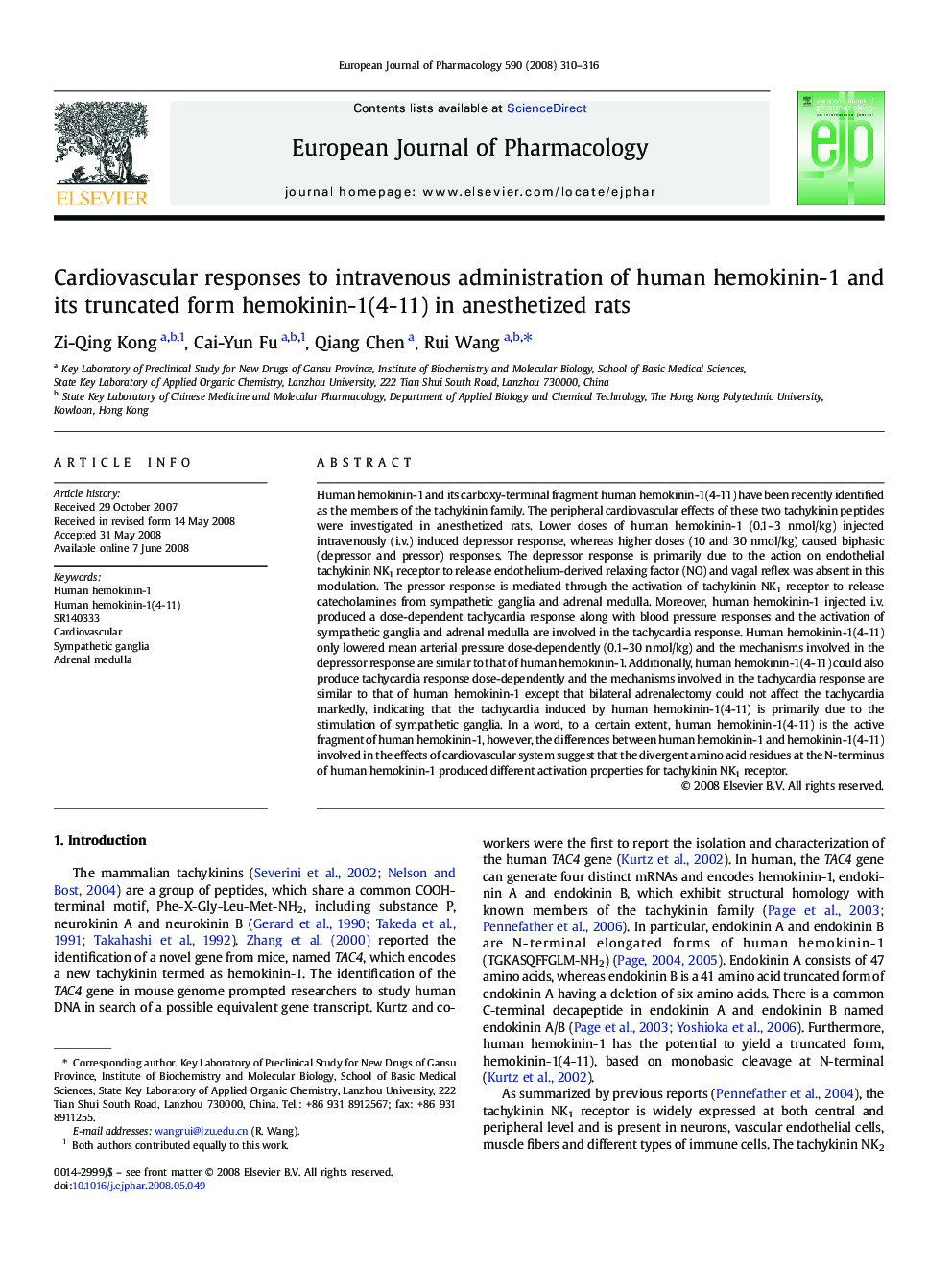| Article ID | Journal | Published Year | Pages | File Type |
|---|---|---|---|---|
| 2534961 | European Journal of Pharmacology | 2008 | 7 Pages |
Human hemokinin-1 and its carboxy-terminal fragment human hemokinin-1(4-11) have been recently identified as the members of the tachykinin family. The peripheral cardiovascular effects of these two tachykinin peptides were investigated in anesthetized rats. Lower doses of human hemokinin-1 (0.1–3 nmol/kg) injected intravenously (i.v.) induced depressor response, whereas higher doses (10 and 30 nmol/kg) caused biphasic (depressor and pressor) responses. The depressor response is primarily due to the action on endothelial tachykinin NK1 receptor to release endothelium-derived relaxing factor (NO) and vagal reflex was absent in this modulation. The pressor response is mediated through the activation of tachykinin NK1 receptor to release catecholamines from sympathetic ganglia and adrenal medulla. Moreover, human hemokinin-1 injected i.v. produced a dose-dependent tachycardia response along with blood pressure responses and the activation of sympathetic ganglia and adrenal medulla are involved in the tachycardia response. Human hemokinin-1(4-11) only lowered mean arterial pressure dose-dependently (0.1–30 nmol/kg) and the mechanisms involved in the depressor response are similar to that of human hemokinin-1. Additionally, human hemokinin-1(4-11) could also produce tachycardia response dose-dependently and the mechanisms involved in the tachycardia response are similar to that of human hemokinin-1 except that bilateral adrenalectomy could not affect the tachycardia markedly, indicating that the tachycardia induced by human hemokinin-1(4-11) is primarily due to the stimulation of sympathetic ganglia. In a word, to a certain extent, human hemokinin-1(4-11) is the active fragment of human hemokinin-1, however, the differences between human hemokinin-1 and hemokinin-1(4-11) involved in the effects of cardiovascular system suggest that the divergent amino acid residues at the N-terminus of human hemokinin-1 produced different activation properties for tachykinin NK1 receptor.
